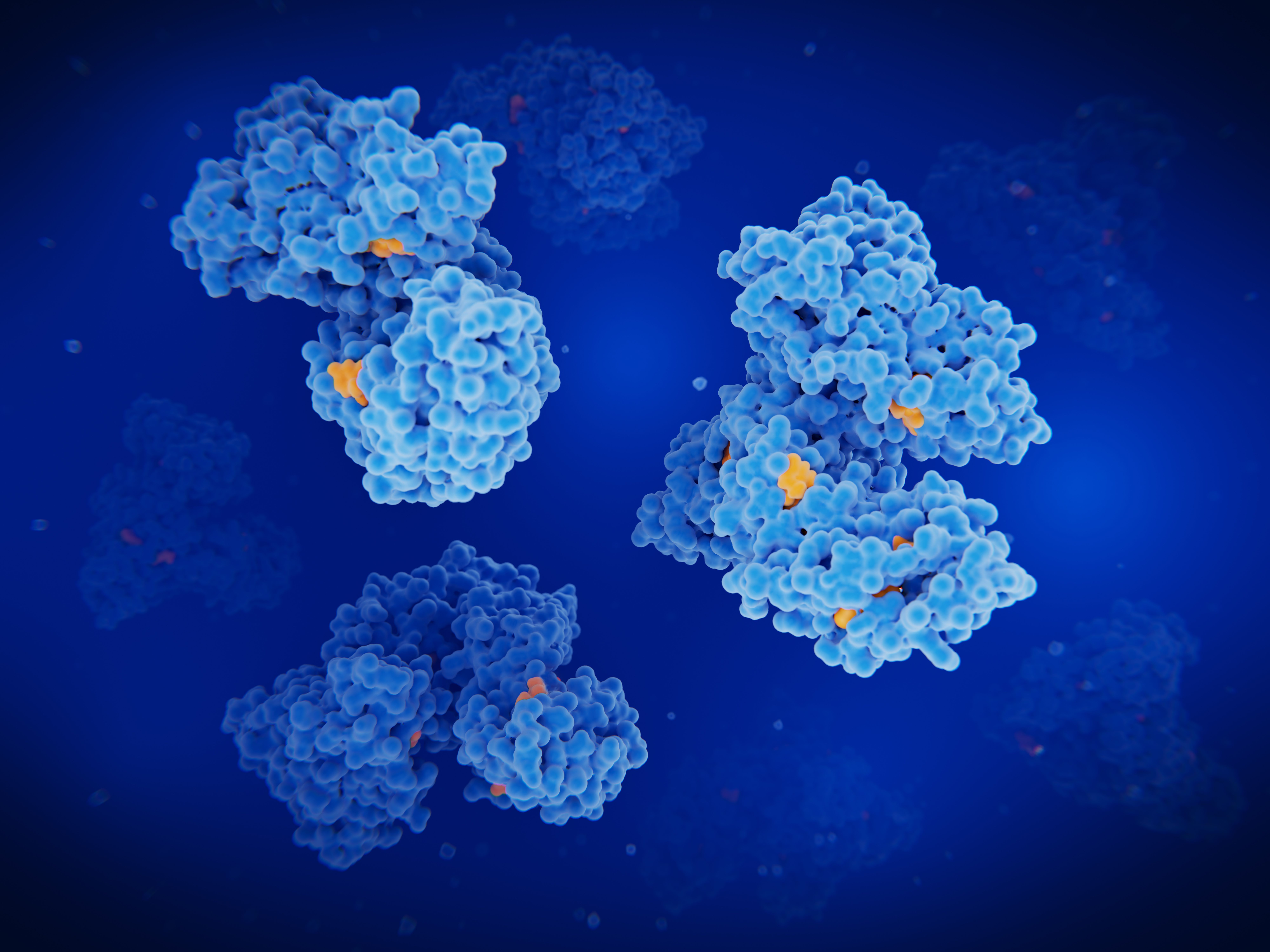Measuring Fatty Acids and Fatty Acid Methyl Esters Using GC–MS/MS
Scientists from Essen, Germany recently created a method for simultaneously analyzing fatty acids (FAs) and fatty acid methyl esters (FAMEs). Their work was published in Analytical and Bioanalytical Chemistry (1).
Albumin molecules transporting fatty acids, hormones and drugs in the blood | Image Credit: © Juan Gärtner - stock.adobe.com

Fatty acids (FAs) and fatty acid methyl esters (FAMEs) are substance classes that are used in many fields, including medicine, microbiology, industrial production, and more. Simultaneously analyzing these substances can be advantageous in various applications, since they are related, can be converted into each other, and often appear in the same environments together.
Usually, gas chromatography (GC) is used to analyze FAs and FAMEs. However, according to the scientists, there have been no methods capable of analyzing FAs and FAMEs in one run. Part of this can be attributed to classically utilized derivatization techniques for FAs in GC analysis, namely methyl esterification, which makes it impossible to distinguish between FAs and FAMEs. However, this study introduced a new method for simultaneous determination of FAs and FAMEs; specifically, this method includes fully automated solvent-free solid-phase microextraction (SPME) arrow headspace extraction combined with isotope-labeling in situ FA derivatization with deuterated methanol (CD3OD). According to the scientists, using the chromatographic isotope effect(ΔRt = 0.03 min), which refers to changes in chromatographic retention order that stems from differences in the isotopic content of molecules, and the + 3 m/z mass shift, FAs can be selectively differentiated from the FAMEs during gas chromatography tandem-mass spectrometry (GC–MS/MS) operated in the multiple reaction monitoring (MRM) acquisition mode.
GC–MS/MS in MRM mode involves isolating specific precursor ions in the first mass analyzer, fragmenting them, and then selectively monitoring predefined fragment ions in the second mass analyzer. This targeted approach enhances the sensitivity, selectivity, and quantitative precision of the analysis. MRM allows for the detection and quantification of specific compounds in complex samples.
To predict the retention times of deuterated compounds, a different approach was presented using the internal standards. Using design of experiments, the optimized derivatization conditions were found to be 20 min, 50 °C, 4 v/v% CD3OD, and pH 2.1. Calibrating FAs and FAMEs was done in the sample matrix by spiking the required amount of respective mixes to the matrix solution. This was done in different concentration ranges by standard addition in five real matrices and ultrapure water, leading to good linearities and method detection limits for FAs ranging from 1–30 µg/L and for FAMEs from 0.003–0.72 µg/L. Altogether, these compounds were detected in samples from surface water, wastewater treatment plant effluent, and bioreactor samples, held in concentrations ranging from 2–1056 µg/L for FAs and 0.01–14 µg/L for FAMEs.
References
(1) Tintrop, L. K.; Lieske-Overgrand, J. R.; Wickneswaran, K.; Abis, R.; Brunstermann, R.; Jochmann, M. A.; Schmidt, T. C. Isotope-Labeling In Situ Derivatization and HS-SPME Arrow GC–MS/MS for Simultaneous Determination of Fatty Acids and Fatty Acid Methyl Esters in Aqueous Matrices. Anal. Bioanal. Chem. 2023, 415,6525–6536. DOI: https://doi.org/10.1007/s00216-023-04930-1
(2) Aslani, S.; Armstrong, D. W. Effect of Position of Deuterium Atoms on Gas Chromatographic Isotope Effects. Talanta 2023, 265, 124857. DOI: https://doi.org/10.1016/j.talanta.2023.124857
Carol Robinson Awarded 2024 Lifetime Achievement European Inventor Award
July 24th 2024Carol Robinson of the University of Oxford has received the European Inventor Award 2024 for Lifetime Achievement from the European Patent Office for her work bringing mass spectrometry to structural biology.
Characterization of Product Related Variants in Therapeutic Monoclonal Antibodies
July 16th 2024Navin Rauniyar and Xuemei Han of Tanvex Biopharma USA recently discussed how identifying product-related variants through characterization enables the recognition of impurities that compromise the quality and safety of drugs.